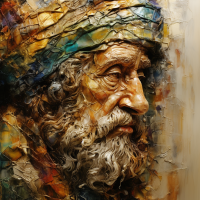Aliasing is a common artifact encountered in digital imaging that can affect image quality and clarity. It occurs when the resolution of an image is insufficient to accurately represent the detail of the scene being captured. This phenomenon often results in jagged edges, moiré patterns, and other visual distortions that can detract from the overall quality of the image.
Understanding how aliasing occurs is crucial for creators and designers working on a text-to-image prompt platform. By recognizing the factors that contribute to aliasing, such as the sampling rate and spatial frequency of the image, users can take proactive steps to mitigate its effects and produce high-quality images.
One common technique used to reduce aliasing is anti-aliasing, which involves applying a filter or algorithm to smooth out jagged edges and reduce visual artifacts. By implementing anti-aliasing techniques during the rendering process, creators can achieve more accurate and visually appealing images that are free from aliasing distortions.
On a text-to-image prompt platform, where users are constantly generating new visual content, understanding aliasing and how to address it is essential for producing professional-looking images. By optimizing image resolution, sampling techniques, and anti-aliasing methods, creators can minimize aliasing artifacts and enhance the overall aesthetic appeal of their digital creations.
Additionally, staying informed about advancements in digital imaging technology and software tools can help users stay ahead of the curve and leverage the latest techniques for reducing aliasing in their images. By staying proactive and continuously refining their digital imaging skills, creators can ensure that their visual content stands out for all the right reasons.


 ColinPuff
ColinPuff


 daizar
PRO
daizar
PRO